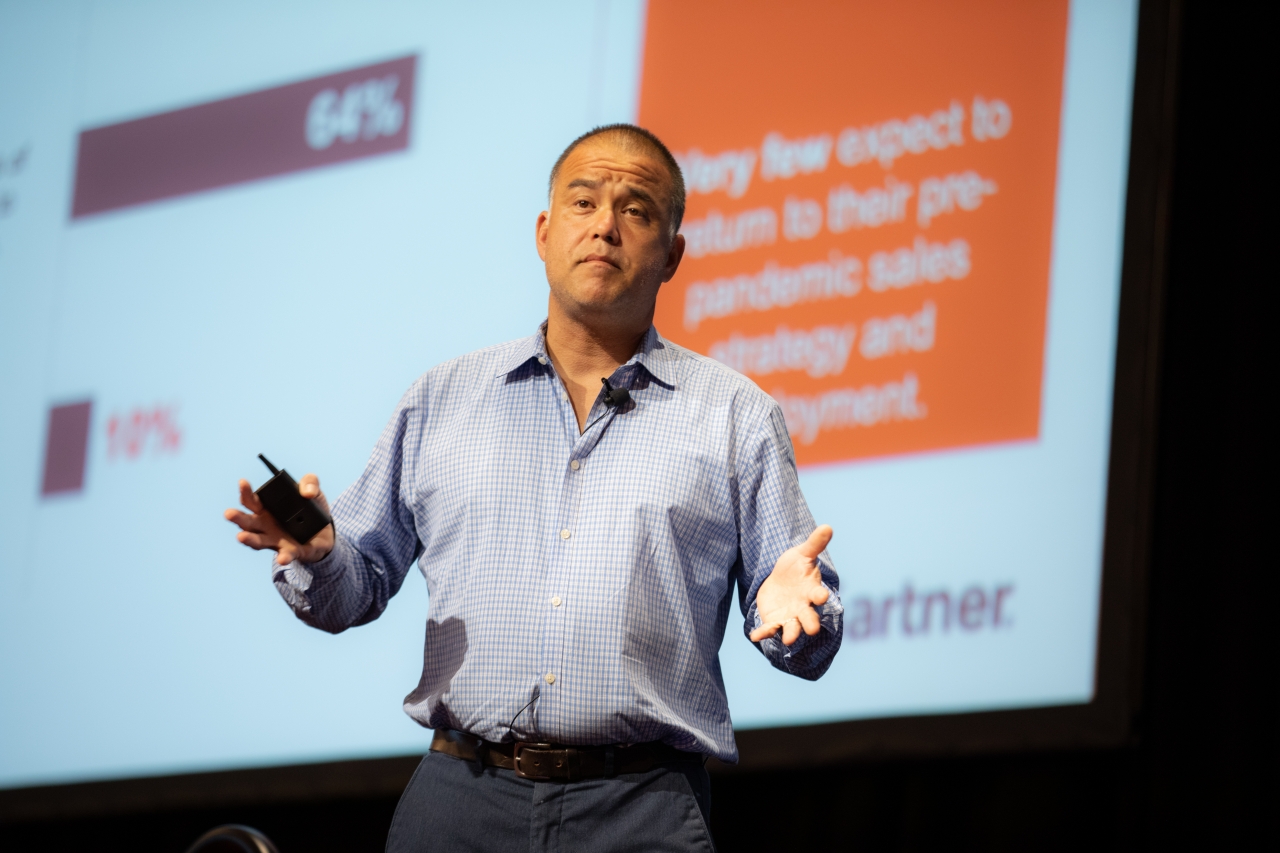#B2BSMX Recap: Go-To-Market Improvement Takes Center Stage In Boston
- Written by Michael Rodriguez
- Published in Industry Insights
The Demand Gen Report team could not be happier to be at the B2B Sales & Marketing Exchange (#B2BSMX) live in Boston! We’ve spent the past two days mingling with marketing and sales experts and attending multiple session across four dedicated content tracks: Profitable Partnerships, Demand Gen Summit, Revenue Operations and FlipMyFunnel.
The first day of #B2BSMX featured a series of intimate Workshops, Case Studies and a Keynote that covered everything from leveraging existing partner programs to data hygiene and quality, all with a focus on account-based marketing (ABM), go-to-market (GTM) strategies and the elimination of siloes. Throughout the sessions, the speakers took a stance of pointing common issues teams face while providing actionable insights into how to combat them.
Experts from B2B Fusion, Printfection, Inverta, 6sense, Reltio, Bombora, Kazoo and much more hosted intimate, hands-on Workshops and Case Study sessions that provided attendees and practitioners with real-world examples and actionable advice that they can immediately apply into their existing strategies. A key focus of the event revolved around GTM and the role ICPs play in structuring strategies.
Identifying ICPs To Shape GTM Strategies
 Kicking off the GTM trend was Gartner’s Craig Rosenberg, with his opening keynote “How 2020 Strengthened Collective Revenue Generation For High-Performing B2B Brands.” He explained that one of biggest changes for organizations was the renewed focus on ICPs, which have quickly found their place as a cornerstone of marketing campaigns. According to Rosenberg, marketers and salespeople in 2021 are focused on their ICPs to find best-fit accounts, while adopting data-driven GTM strategies that allow them prioritize accounts for more meaningful engagement.
Kicking off the GTM trend was Gartner’s Craig Rosenberg, with his opening keynote “How 2020 Strengthened Collective Revenue Generation For High-Performing B2B Brands.” He explained that one of biggest changes for organizations was the renewed focus on ICPs, which have quickly found their place as a cornerstone of marketing campaigns. According to Rosenberg, marketers and salespeople in 2021 are focused on their ICPs to find best-fit accounts, while adopting data-driven GTM strategies that allow them prioritize accounts for more meaningful engagement.
“It’s not enough anymore to just go, ‘Yeah, we sell to these companies over here and regular employees,’ because it just doesn't turn,” said Rosenberg. “The revelation wasn't just how you can identify target-fit accounts with the ideal customer, it was our ability to prioritize. Now we have data that tells us a plan and how to engage, not just to plan in general.”
Doubling down on the resurgence of ICPs was Sangram Vajre of Terminus, who kicked off the second day with a morning keynote titled, “Why Your Go-To-Market Strategy Is Broken & How To Fix It.” When organizations test for best-fit account, it presents an opportunity to rebuild GTM strategies from the ground up. He described a three-step process, which includes:
- Identifying common problems and pain points target accounts have and determining how they can alleviate them;
- Using that information to create a product that consistently engages ICP accounts while generating pipeline; and
- Building a platform that advertises multiple products, allows for improved pipeline and increased net account retention.
We’ve got to play in an orchestrated way. You have to have visibility to scale up and scale down different GTM strategies. @funnelholic @gartner #B2BSMX pic.twitter.com/iAOD6gIBzJ
— B2B Sales & Marketing Exchange (@B2BMX) August 9, 2021
The Importance Of Internal Alignment For GTM Success
Though framework creation is important, the efforts are for naught if marketers and salespeople don’t remain closely collaborated or pursue different goals. In his keynote, Vajre explained that all internal teams should know the target audience, how they can operationalize marketing and scale it to reach all parts of an organization’s ICP.
“Marketing and sales need to work well together for GTM success,” Vajre explained. “As soon as everyone is in the room and figured out who their target accounts are, that is when you start being intentional. Now everybody's on the same page of where we need to go and how the product works, so we can effectively engage our accounts.”
Furthermore, a panel of CMOs from PandaDoc, Senzing and PenFed Credit Union highlighted the importance of cross-functional processes where every employee — from executive to sales rep — knows their data, the process and the GTM strategy. The panelists encouraged attendees to collaborate with other executives and interact with frontline employees often, as it can clear up confusion about which accounts fit their GTM strategy or what data sets suggest about potential future products.
“CMOs need to spend more time with their peers at their organization,” said Deanna Ransom of Senzing. “Every member of an organization’s leadership team needs to fact-check and understand their company’s data and processes, as it will improve data objectivity and accuracy for marketing operations and processes. This can help you ensure the quality of your content and efficiency of your strategy.”
The DGR team is working diligently to bring you the best insights, takeaways and trends from the show, so be sure to keep your eye on our website as we dive into specific areas of the event’s focus over the next couple of days.


